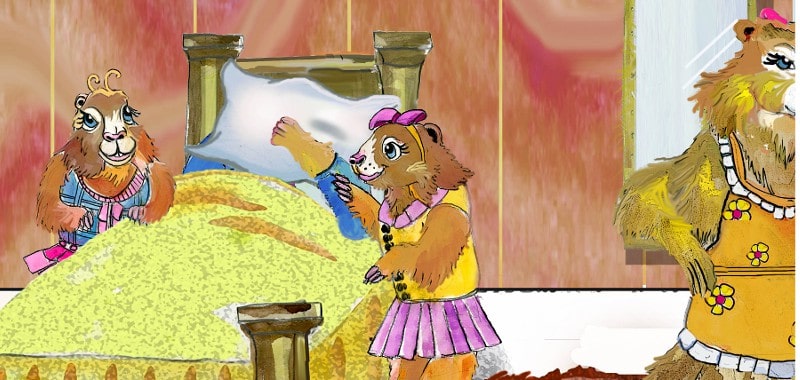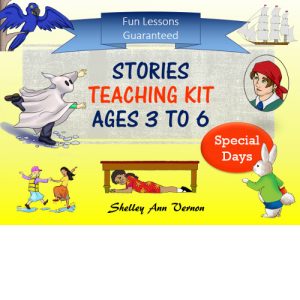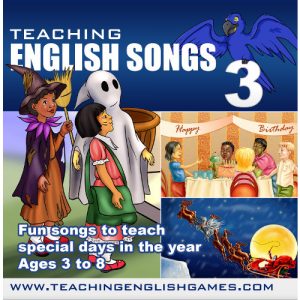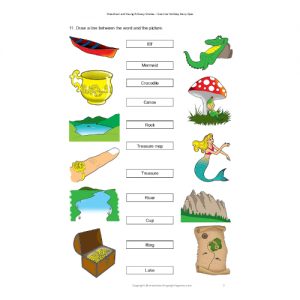Here is a fun daily routine lesson plan for preschool and young primary school-age kids. How would you teach preschool children these common daily routine verbs: wake up, get up, wash your face, eat your breakfast, and brush your teeth?
Use a cute story
Why not use my daily routine lesson plan, story and song? Groundhog day is the story. North American folklore says that if it’s sunny when the first groundhog comes out of his burrow, it’ll be a late Spring. If it’s cloudy, Spring will be early. Groundhogs sleep all winter, like their European brothers, the marmots. So our hibernating groundhog is called Sleepy. The first thing we are going to do is wake him up.
Wake up Sleepy game
Children lie on the floor pretending to sleep. The teacher calls out, “Wake Up Sleepy!” All the children jump up and run to the wall. Use heads in hands at desks in a classroom situation. Children jump up and stretch their arms out rather than running to the wall.
Children return to their sleeping position, face down and no looking, but lots of snoring! Finally, the teacher creeps around and touches one child who shouts out, “Wake Up Sleepy!” Do this a few times, then try a variant.
Variant 1
If it’s a girl’s voice, they don’t move, and if it’s a boy’s voice, they “wake up”. It is not always easy to tell the difference between a girl’s and a boy’s voice with preschool children, but that’s just part of the fun. However, if the activity is not working, have kids choose between a high voice and a low voice.
Variant 2
Variant 2 is for the teacher to pick one child who hides before calling out, “Wake up Sleepy!” Children jump up and must call out the name of the missing child. They only have ten seconds to guess, while you count down from 10 to 0. If no one has guessed, help them by asking, “Is it Juan? Is it Sasha?” Children then return to their sleeping position, and a different child hides and calls out, “Wake up Sleepy!”

More daily routine verbs
Verbs: brush your teeth, wash your face, eat your breakfast, go outside
Introduce these verbs briefly with miming games. Play Simon Says, but with these verbs rather than body parts. Rather than using “Simon says”, use the phrase “Wake up Sleepy and…verb”. “Wake up Sleepy and brush your teeth.” Children all mime brushing their teeth. “Wake up Sleepy and go outside”. Children go to the wall or mime popping up out of a marmot burrow. “Wash your face.” Oops! Any child miming face washing sits down for a turn, as the command was not preceded by “Wake up Sleepy.” With 3-year-old children, you’ll have to help them by miming yourself when they are supposed to mime, and not miming when they shouldn’t.
Tip
Don’t make preschool children lose, it upsets them. Instead, play as a non-competitive group game.
Tell the story
At this point, tell the story about Sleepy the groundhog, and then continue with post-story activities, such as acting out the story with sock puppets. Eventually, you want your pupils to act the story out while you tell it.
Get this great story for daily routine verbs
You can buy Sleepy the Groundhog story, and the entire daily routine lesson plan in this great package deal of ten stories, with lesson plans made of games. Flashcards included. Matching songs are available too.

Silly Sleepy Game
Bring up three children and hide them behind your desk or a blanket that you suspend between furniture; heavy books will hold the blanket in place. One child puts on my groundhog mask (included with the songs that go with these stories). Those watching have to call out, “Come out Sleepy!” The three children take turns, but in random order, to quickly stick their head out suddenly. ONLY when the marmot mask appears do the children call out, “Groundhog!” Swap over the children behind the blanket from time to time.
With younger children, give everyone a turn. With young primary kids reward those who react quickly, it’s an additional motivation for the class to be paying attention. For example, if anyone calls out “Groundhog!” when a child is not wearing the marmot mask they stand up. After two or three turns, all those standing up do a silly forfeit such as a marmot dance, and then all sit down again and be back in the game.
Keep the class on their toes by having Sleepy pop out from different parts of the blanket, out the top, on the left, on the right and so on. Have multiple appearances such as two children with no mask together.
Get the full set of stories for preschool and young primary school children. 10 great stories. 10 lesson plans with games, pre and post-story ideas, 96 flashcards covering basic vocabulary for beginners learning English, bingo, and more. Find out all about these ESL Stories here.
-
Sale Product on sale
 Special Days Stories Teaching Kit + PowerPoints
Special Days Stories Teaching Kit + PowerPoints€39.97Original price was: €39.97.€29.33Current price is: €29.33. -
Sale Product on sale
 Songs 3 (audio + karaoke + masks)
Songs 3 (audio + karaoke + masks)€16.00Original price was: €16.00.€9.97Current price is: €9.97. -
Sale Product on sale
 Special Days Worksheets
Special Days Worksheets€19.97Original price was: €19.97.€9.97Current price is: €9.97.



